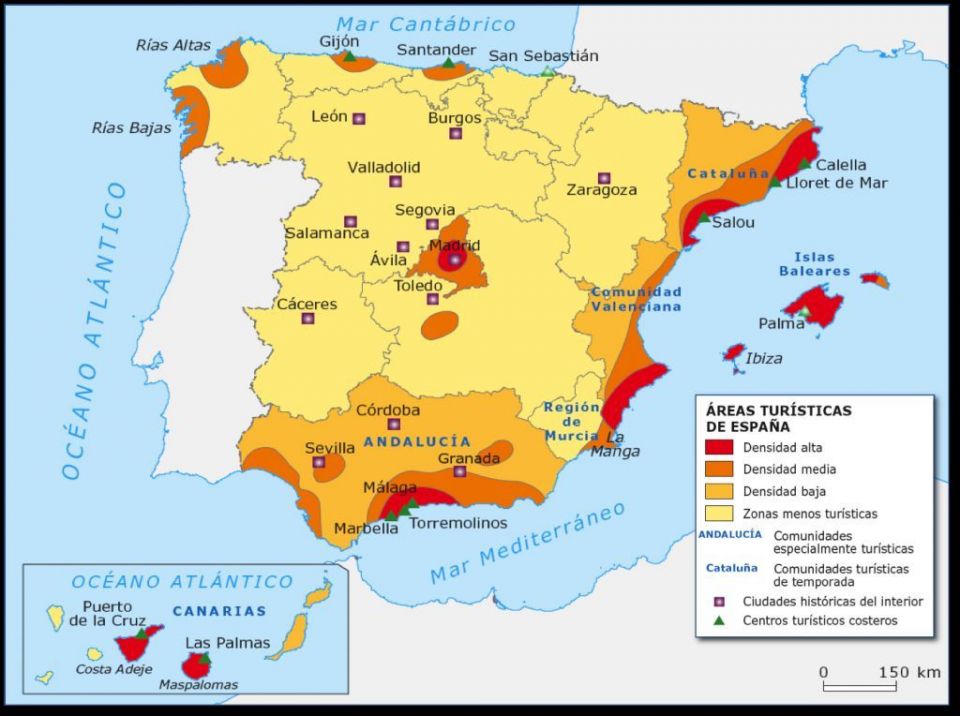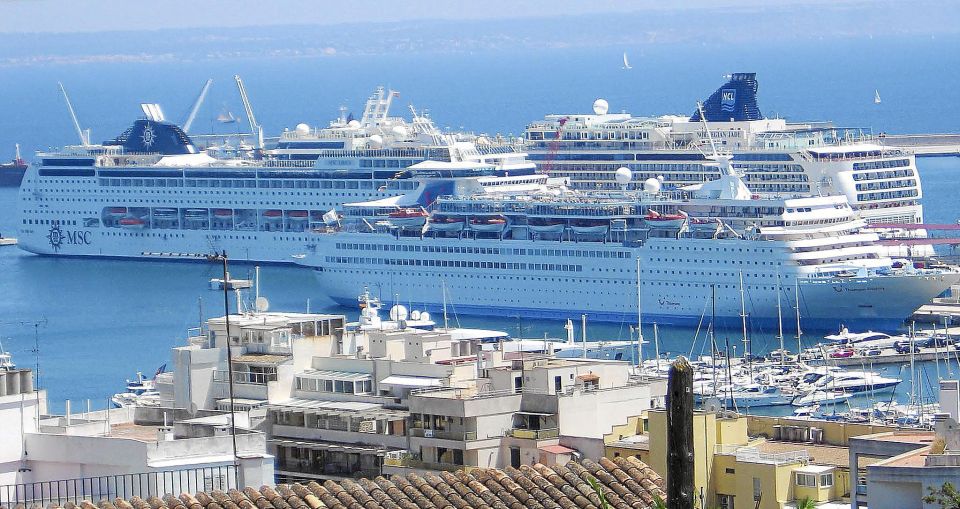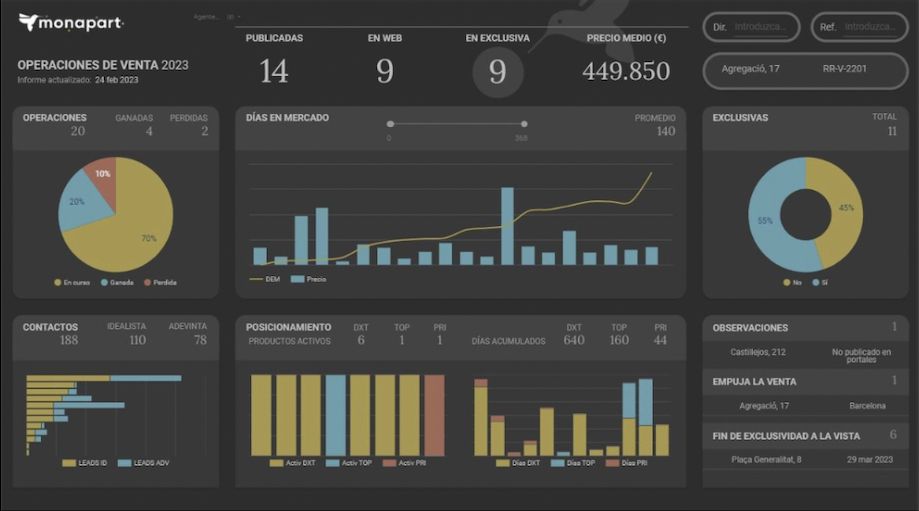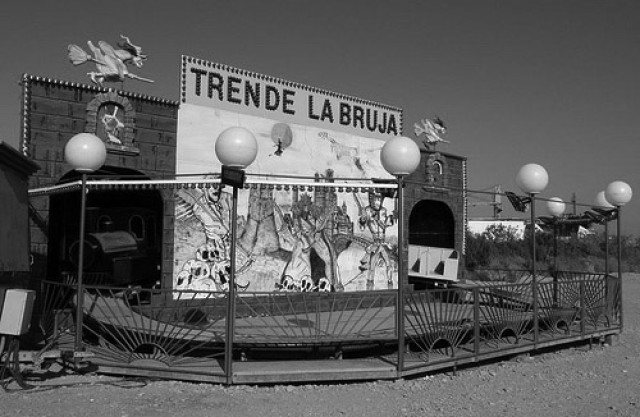The pressure of holiday rentals in Palma and the new Tourism Law
This phenomenon is particularly intense in cities such as Palma (especially in the centre) and Eivissa, and specifically in homes with an average income and acceptable quality.
One of the causes of this phenomenon is attributed to the explosion of tourist or holiday rentals. Many landlords have seen short-term rentals as a way of increasing rents compared to traditional rentals, thus taking a large number of properties off the conventional market that are no longer offered as long-stay properties.
This practice, which is authorised by law in detached and semi-detached houses, is also being developed very intensively in dwellings located in multi-family buildings, despite the fact that this activity is prohibited. This issue, together with the territorial zoning of the Balearic Islands, which must define the areas in which holiday use is authorised, and the debate on how to limit the growth of this activity by means of a real ceiling on the number of tourist places, are the workhorse of the Government, the Consell and municipal corporations, as well as a daily topical issue with the background noise of the excessive tourist pressure being endured in the Balearic Islands.

After almost two years of work, last Tuesday 19 July was approved in the Parliament the amendment of the Law 8/2012 on Tourism in the Balearic Islands. Different points of view among the members that make up and support the Govern on some of the most controversial articles led to a plenary session with a somewhat grotesque ending, as the star proposal that was to definitively regulate the problem of tourist rentals in multi-family buildings was left in a limbo of alegality. Now, so that the summer does not pass over this decision (both on a practical and political level), this situation will have to be regulated by Decree Law.
The questions are: Why has it come to this point? What are the causes that have turned tourist rental into the sector's scapegoat? Will traditional rental properties regain their specific weight in the real estate market in the Balearic Islands? To find an answer, we need to look at the current situation.
Today, society in the Balearic Islands has a feeling of tourist pressure that, in some cases, has become suffocating. The media, associative movements and citizens in general are expressing this unease. In a community with a limited territory and a fragile environmental balance, the current situation seems to be the result of an excess of success with tinges of a certain lack of control.
A success that was pursued from the very beginning. It is common knowledge that tourism is the great economic driving force of the Balearic Islands. Since its awakening in the 1950s, all economic activity has developed, to a greater or lesser extent, around this phenomenon. Its evolution has been progressive and controlled over the years, always with the intention of increasing the number of visitors and consolidating this destination on the international circuit.
Long gone are the celebrations of the arrival of the "one millionth" tourist of the 1960s season (with free gifts and paid stays for the lucky ones). In 2010, 8.7 million tourists arrived, in 2014 13.5 million, and last year 15.3 million. Is there a limit? Where should it be?

A combination of factors has meant that in recent years, the arrival of tourists has soared. These include, but are not limited to, the following:
- The situation of geopolitical tension that has affected different areas of the Mediterranean basin, considered to be competing destinations with our own, with the consequent transfer of "borrowed" tourists to our territory.
- The consolidation of the ports of the Balearic Islands, and especially Palma, as one of the preferred destinations for cruise tourism. In 2015, 1.6 million tourists arrived by boat in the port of Palma, and 2016 saw daily peaks of eight cruise ships with 22,000 tourists on board.
- The explosion of the tourist rental phenomenon. The ease with which properties can be published on platforms such as Airbnb or Homeaway has boosted the supply of this type of accommodation, reaching numbers that compete with the number of tourist places available in traditional establishments.
But, will this escalation of visitors be infinite? There are some indicators that are beginning to put a limit to this growth. The latest report from the BBVA Research "Regional Observatory Spain 3Q17Although he continues to indicate that the Balearic Islands is one of the five regions that will lead economic growth in 2017 thanks, above all, to the strength of tourism and construction, he also predicts that in 2018 there will be a possible slowdown in tourism, caused by a gradual recovery of competing markets and the appearance of saturation problems in high season after four or five years of strong growth in visitor arrivals.

If this happens, there will be some easing of tourist pressure, but this should not be an excuse for not tackling problems that can recur at any time and become chronic. The current situation should help us to rethink and plan how we want tourism to be in the coming years. Certainly, an improvement in quality and tourist services, with the renovation and modernisation of the hotel industry, would be essential in order to ensure higher quality tourism (this was already proposed in Law 8/2012). But at the same time, the issue of tourist rental should be approached from an integrating point of view, without placing all the responsibility for overcrowding on it.
It is clear that it is a practice that needs to be regulated, and that it must be carried out legally and with all the relevant authorisations, otherwise there is clear unfair competition with traditional tourist services. But it should also be borne in mind that well-managed holiday rentals provide interesting incentives: they bring together a type of visitor who, for whatever reason, does not like to stay in hotels, but prefers to integrate into the city as a resident for a few days; they increase consumption in the surrounding service sector (supermarkets, restaurants, etc.), and they also help to deseasonalise the tourist season.
The administration should also take into account in the regulation of this activity that, today, it is a source of income not only for professional companies dedicated to the sector, but also, and much more importantly, for families for whom it represents a source of income to supplement their monthly income. There are well-known cases of people who, having lost their jobs during the hard years of the crisis, obtained the necessary income by renting out their homes.
As stated at the beginning, the legal problem is not in single-family or semi-detached houses, but in multi-family buildings, and especially in those located in central areas of urban centres. And it is precisely in these dwellings that the most urbanised visitors want to stay.
It would be necessary to reflect on whether a strict prohibition in these areas is the solution, as supply will surely seek mechanisms to be able to adjust to demand. It might be necessary to look for mechanisms that would allow such a supply by setting rules of the game that could not be broken but that would oblige the marketer to follow a series of guidelines: declare the activity, comply with sectoral and safety regulations, obtain the approval of a substantial part of the community, and set limits on the number of holiday homes per building and neighbourhood.
Regulating the existing stock of holiday homes in an orderly and equitable manner will force owners who do not comply with the law to take them back to the traditional long-stay rental market, thus gradually restoring the balance between supply and demand, which is currently extremely imbalanced.





